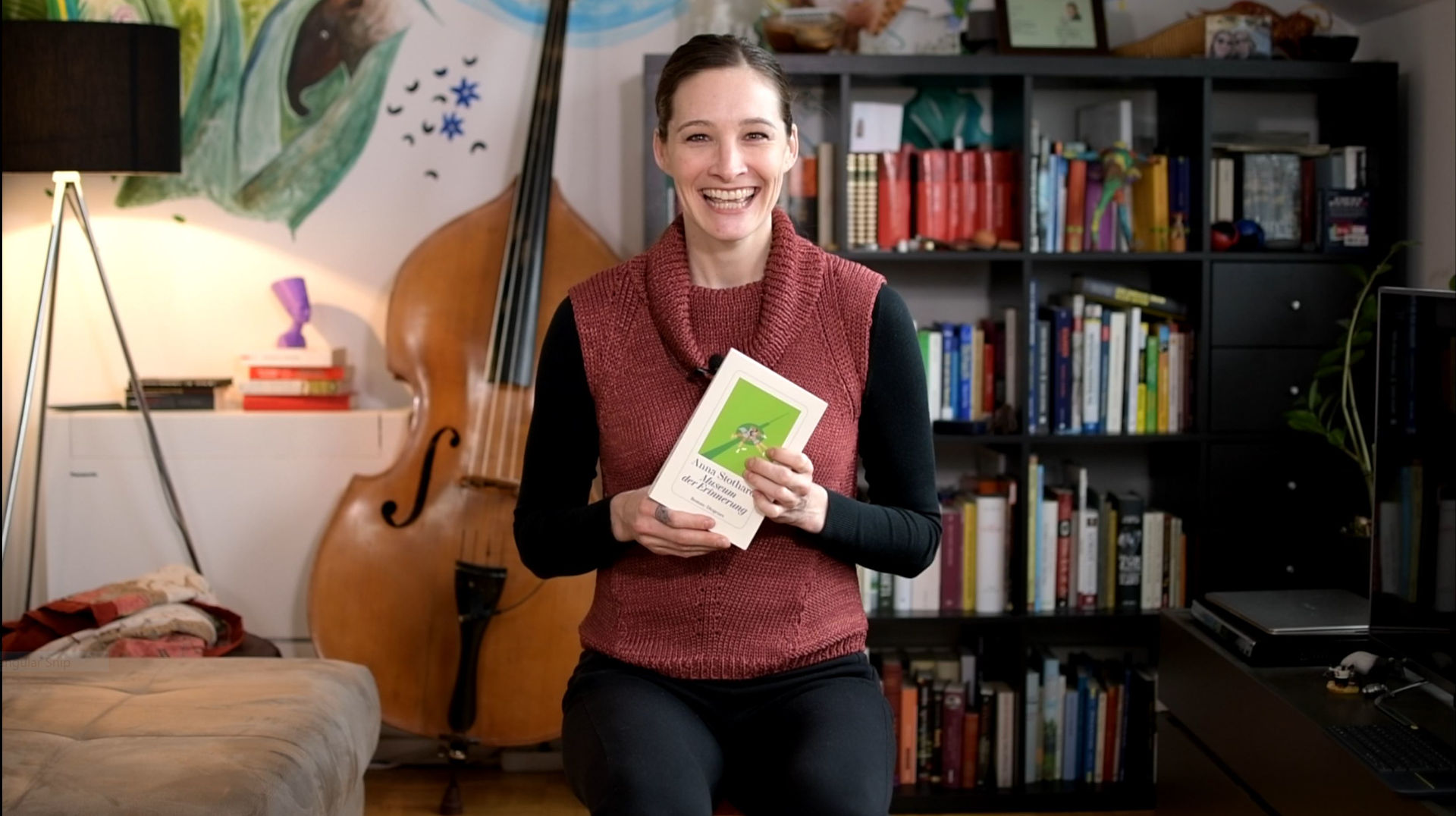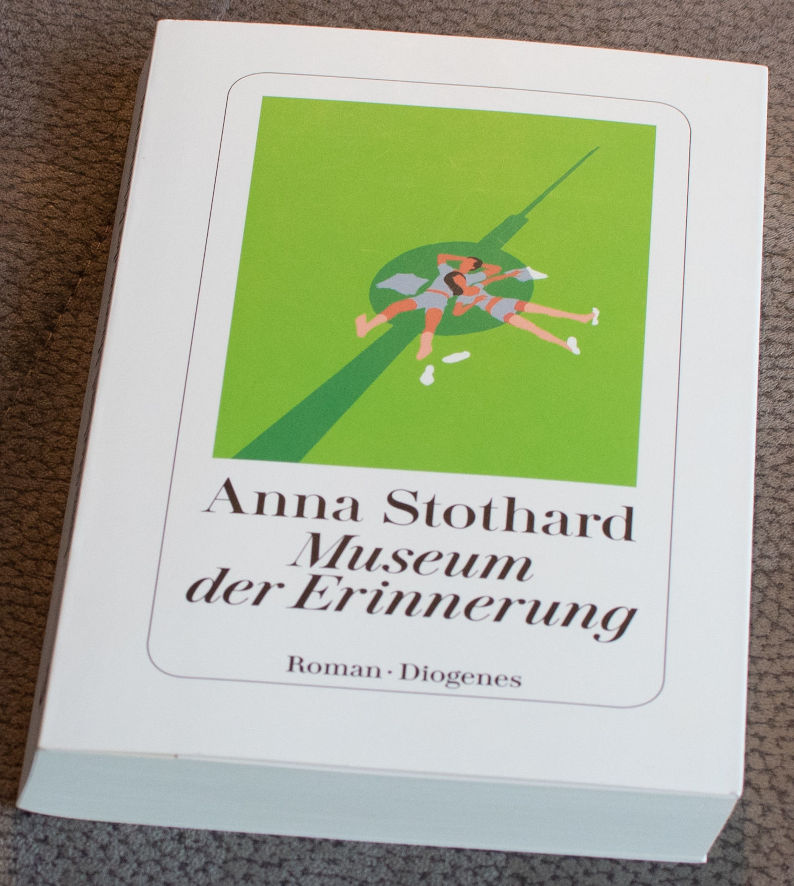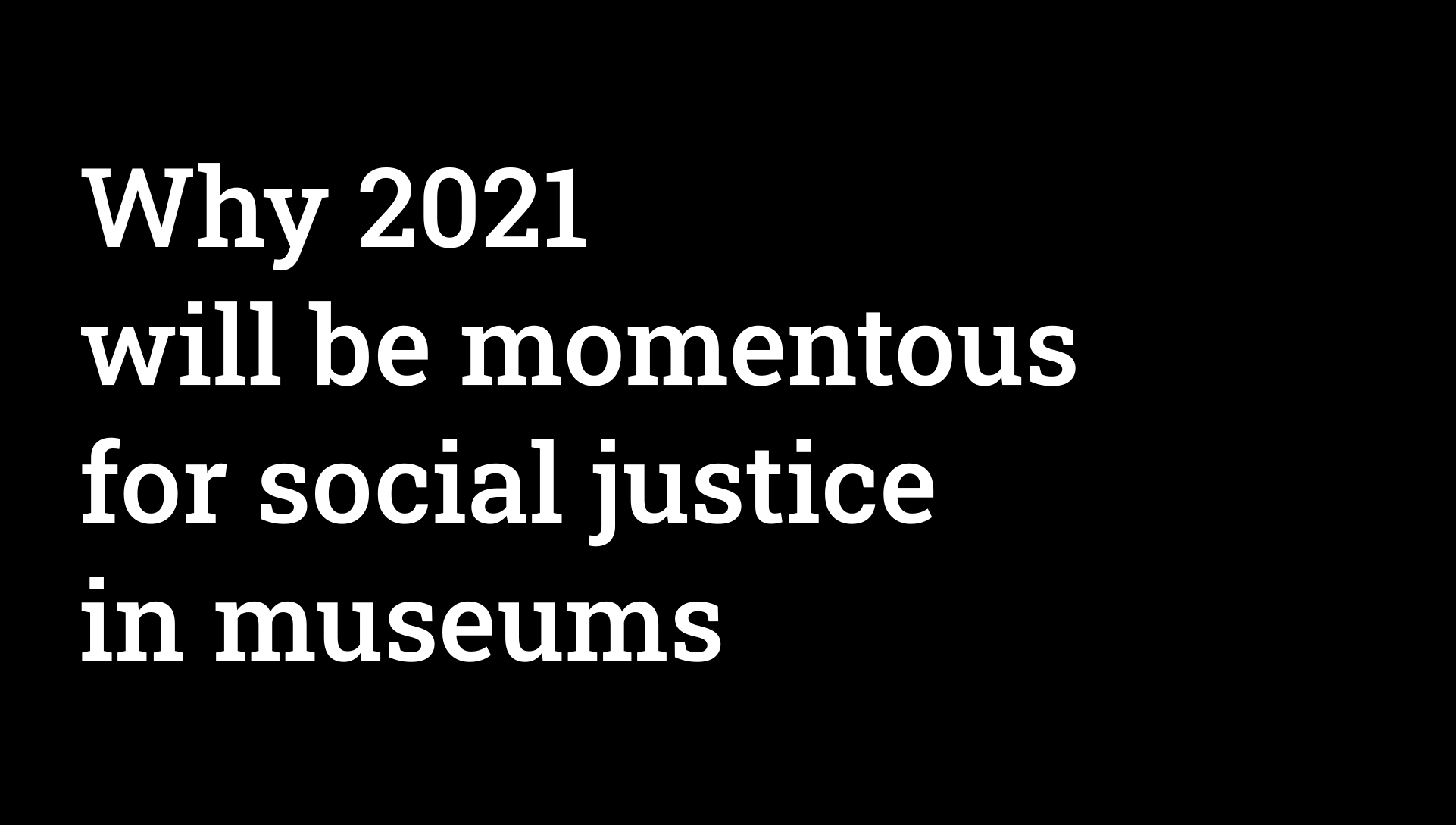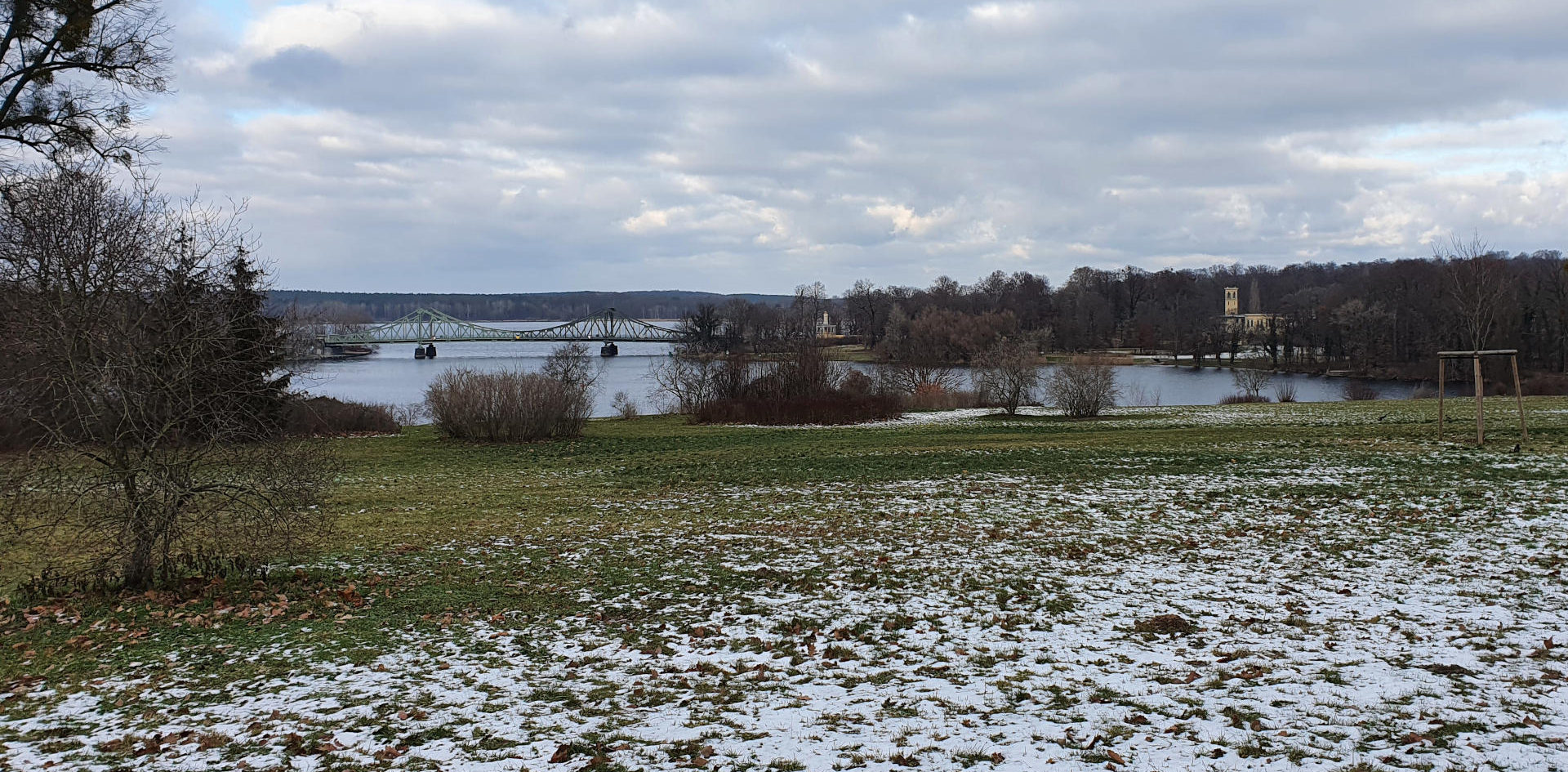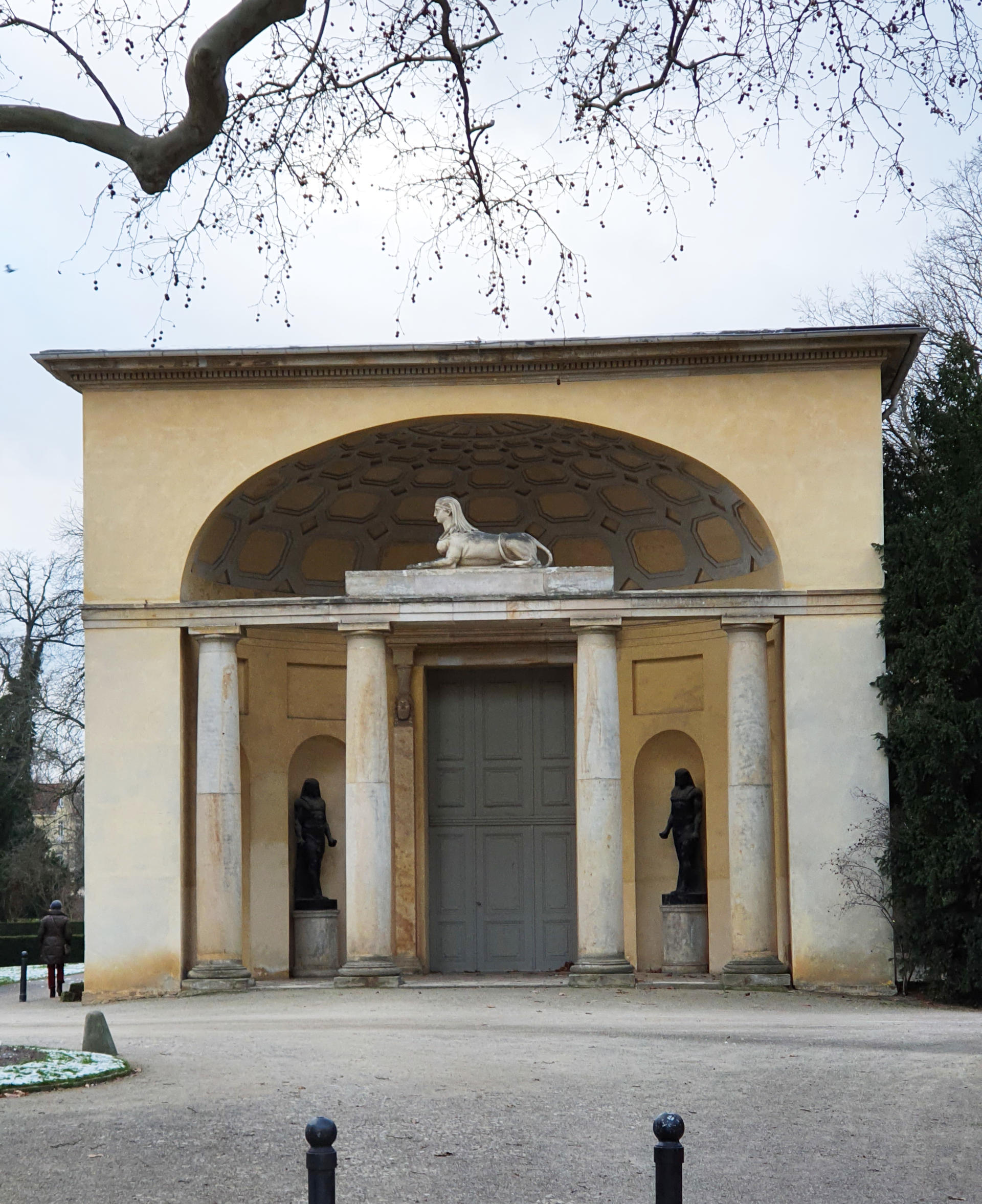Book Review: The Museum of Cathy (Natural History Museum Berlin)
A museum thriller
A friend who knows me very well lent me this book recently: Museum der Erinnerung, that is, Museum of Memory, by Anna Stothard. (Thanks Anne!)
I liked it a lot and even made a video book review about it. Check it out! Below is the transcript and, at the bottom, some links for you to explore to your heart’s desire. Enjoyyyy!
A story of two titles, two covers
The original English title is actually The Museum of Cathy, named after the protagonist – which is much more nuanced and suited to the story. I’ll come back to that. The English cover design also much more aligned with the story; the Diogenes cover shows a scene that not only never happens in the book, but has a relaxed atmosphere that is definitely not in this story.
What's it about?
So much for judging a book by its cover. What’s it about?
The book opens in the Natural History Museum in Berlin, one of my favorite museums.
The fictional protagonist, Cathy, works here as a specialist in insects and especially moths. She pins moths into boxes to preserve them for researchers and museum visitors. Her fiance works in the same museum – which I will say as a museum person, is a highly rare and enviable position for a couple working in the same field. Anyway we learn in the first pages how devoted Tom is to Cathy, bringing her coffee at her desk and generally being googly-eyed over her.
Gradually though we learn about Cathy’s dark history, revealed in flashback-like vignettes interspersed with the “now” time in the natural history museum.
Cathy grew up on a damp, salty, windswept part of the British coast that sounds about as forlorn and isolated as you can imagine. But Cathy loves it for the treasures of nature she can collect there as a kid. She is a collector, even a hoarder, of seashells, feathers, skulls and bones.
This tendency grows stronger through personal traumas that make Cathy’s life so painful, she seeks solace in her objects. I won’t tell you any spoilers, so I’ll just say that she is trapped in multiple abusive relationships and suffers numerous tragedies that exacerbate her hoarding, and expand it from natural things to personal things as well: toy soldiers, as on the book cover, scraps of newspaper articles, and sketches. Also miniature gin bottles and human teeth. Like I said, dark.
Big plus, small minus
That’s the basic picture. Here are my thoughts about this book:
Generally it’s successful. I read the first half in about a day and was eager to go back to it on the following evenings; it has a sort of thriller element as you uncover more and more of Cathy’s history, and how it connects to the present. This was compelling.
I’m going to get my minor complaint out of the way briefly: both Cathy’s delicate appearance (translucent white skin, surprisingly blue eyes) and her secretive personality, the way she doesn’t tell her fiance a single thing about her life, are fetishized in a way that got on my nerves after a while. When I saw the picture of the author who herself has eyes that might be described as “surprisingly blue” I thought, ah, of course there’s autobiography in everything an author writes. Confirmed by the author’s self description on her website as a “hoarder.”
I guess I also wish the author had had a friend from Berlin check the story for accuracy. No real Berliner ever seriously worries that they will be stared at in public because of what they are wearing. It just doesn’t happen.
The soul of museums
Now about the museum aspect.
I like the way Berlin’s museum of natural history plays a big role in the story. It’s not just a backdrop: its labyrinthine hallways, cavernous galleries, and countless exhibits are given a lot of love and attention. The story occupies the museum like a body, inhabiting it completely and activating all its parts.
This is why discovering the English title of the book was such a revelation for me: it makes so. much. sense. to think of Cathy’s collection as her private museum ABOUT HERSELF. It’s not just a collection of memories, the way the German title implies: it’s HER represented in objects.
This is a really cool idea to contemplate for all of us: to what extent do our objects define us? If you were to choose just enough objects to fit in a shoebox that were going to be your Museum of You, what would they be? How complete of a picture can they make? Probably not 100% complete, but perhaps metaphorically, symbolically representative nonetheless. Or not – maybe the shortcomings of what objects can represent becomes painfully obvious.
Now take that idea and apply it to museums you’ve been to. How much can the exhibited objects tell us about a given subject? Not everything, clearly; so the question is, is it representative? Sufficiently representative? Are there ways to make the objects more or less potent in this job of representation?
This is getting really deep, but it’s actually worth pondering because it’s at the root of what museums do, or try to do, or should do, or shouldn’t try to do.
In this respect, I would recommend as a complementary read Orhan Pamuk’s The Museum of Innocence. This catalog of his museum in Istanbul, like the museum itself, plays with the same convolutions of personal history and the museum format. It’s very exciting.
In conclusion: read this book! It is a good slow-burning psychological thriller, with loving and lively descriptions of both objects and Berlin’s Natural History Museum.
What good museum novels do you know about? Share in the comments below!
Sharing the Museums Love at MuseumNext
I’m thrilled to see an essay of mine appear on another awesome museum-community website, MuseumNext. Woohoo! MuseumNext gets museum people together both on- and offline (currently only online of course) to talk about pressing issues in the field, from new technologies to examples of best practices. Their yearly conference is being held this year online; maybe you want to join!
As the title of my essay implies, I chose the topic “Why 2021 will be momentous for social justice in museums” because I think there are some positive trends that started in 2020 and could make a real difference this coming year to making museums more conscientious and inclusive places. Take a look at the essay and see if you have any additions to the list!
Have you noticed trends in social justice in museums that we should watch in 2021? Share in the comments below!
Outdoor Museum: Monuments of Potsdam
While lockdown is keeping the museums closed for now, monuments are like the museum collection of the outdoors! I decided to get out of the city and visit Potsdam, the green oasis near Berlin. The extra nature there gladdens my heart: there is a lot more space and greenery than in Berlin proper, and much more water (the Havel river and its many bays). What’s more, this beautiful landscape is strewn with 19th-century monuments. Inspired by Slow Travel Berlin’s recent walk in this area, I planned a big loop hitting some of the major monuments along the way. With numerous quick photo shoots and a VERY quick picnic lunch in arctic temperatures, it took me 2.5 hours.
Babelsberg Palace was a summer home for the Prussian crown prince William I and his wife. It has a great view, but it’s sure windy on that hilltop.
The view from the Palace encompasses some other great monuments: left, Glienicke Bridge, the so-called Bridge of Spies during the Cold War. Center, a tea pavilion for guests of Glienicke Palace. Right, Glienicke Palace.
The entrance to the Orangerie in the New Garden (point B on my map) contains Egyptian-style sculpture: a sphinx and two standing male figures. Quite relevant to the academic book I’m reviewing right now, Beyond Egyptomania!
Here’s a highlight reel of the monuments I saw! Astonishingly, the pyramid monument was actually used as a refrigerator: underneath it is a basement 5 meters deep that kept food and party ice from the local lake cold!
What outdoor museums have you discovered? Share in the comments below!
Museums can be homeschooling heroes!
As learning institutions, museums are primed to help caretakers who suddenly find themselves trying to homeschool children during this pandemic. Many American museums have published resources to help their communities in crisis, including a huge number of smaller, local museums. What an amazing set of resources for even after the pandemic is over!
The BEST resource is definitely this page about distance learning by the American Alliance of Museums. It collects online learning materials from an absolute ton of museums, and allows you to search it using certain filters: age of user, guidance required, subject, etc. I had a ball looking through here and discovering some truly astounding gems:
- My top pick, hands down, is this video from the Natural History Museums of Los Angeles County for preschoolers: how to move like a spider endemic to southern California. It even overpowered my arachnid heebie-jeebies, that’s how great it is. Sure, it speaks to my Californian heart – but it is also so much fun, and teaches you about observing different kinds of local wildlife! Imagine doing this with a wee one and go ahead and try not to smile.
- The Job Carr Cabin Museum in Tacoma, Washington has some great worksheets for gradeschoolers. The one titled “Where was the Oregon Trail?” brought back fond memories of the OR Trail video game… But it is also well-designed to develop a variety of skills in a fun way.
- The Design Museum Foundation put out an exercise to design a chair for a customer with certain needs. It sounded a bit light at first, but the guiding questions reveal the complexities of the task. Great for working on real-life skills in realistic scenarios!
In addition, these websites are worth checking out:
- What a huuuuge catalog of museums with online learning resources! Categorized somewhat, but leaves you to do a lot of footwork on your own.
- Here is a roundup of art museum resources, including The Metropolitan Museum and MoMA.
- Te Papa Tongarewa in New Zealand has an incredible gallery of home-learning videos on many topics, in many formats, each labeled with the grade level it corresponds to in the NZ school system. Also, there is a large collection of online puzzles of images from the collections… feeding an addiction that I think many of us have developed during lockdown!
- Oakland Museum of California has posted a bushel and a peck of home learning options, including art projects that need not be just for kids!
- The Smithsonian offers an immense array of learning resources, of which this document seems to me the best starting point. I’m not sure why these pages are in Google Docs instead of integrated into the website, but that’s not a big deal.
This list is by no means exhaustive; it is just a tiny portion of the resources out there, selected by my own whimsy. I would love to hear about your own favorite resources for learning at home!
Have you discovered great homeschooling resources from museums? Share them in the comments below!
Embracing the Digital Museum
Here in Berlin, as in some other parts of the world, measures to combat the pandemic are not only continuing but increasing. So how are museums responding?
By now it’s clear that the pandemic is not going to be short-term. Not only has it been affecting our daily lives for nearly a year, but despite the vaccine on the horizon, it will continue to do so for months to come. Institutions are responding to the mandatory closures in different ways – and unfortunately, most museums are not exactly on the forefront of innovative thinking here. In many institutions there is a hunker-down-and-wait-for-it-to-blow-over mindset that is highly, tragically regrettable.
BUT!
There are some shining lights in the museums landscape: institutions who have embraced the digital to connect with their communities despite the lockdowns. Here are two of my favorites:
Rijksmuseum, Amsterdam
The Rijksmuseum’s admirably visitor-oriented approach is evident just from a first glance at the home page. The top image currently shows a visitor taking a selfie with art in the gallery, and a friend taking a photo of the selfie-taker. Not only acknowledging but encouraging this sort of self-referential, tech-based interaction with the exhibits is unusual among museums! Many tried for a long time, and are still trying, to discourage this sort of modern way to engage with museum displays. But I agree with the Rijksmuseum: you can’t win that battle. And why would you want to? It’s more productive for everyone to respond to visitors’ interests, not try to repress them.
Moreover, the Rijksmuseum has built up its online offerings in numerous ways. You can create your own curated collection of museum objects and share it with others – what a fun idea! And the YouTube channel is full of lively, short videos. I especially liked the one on “Female Leadership.”
Museum für Naturkunde (Natural History Museum), Berlin
One measure of how actively museums are exploring new directions to reach people is simple: are they on TikTok? It might sound laughable, but it is dead serious! In this respect Berlin’s Museum of Natural History is a frontrunner. Its TikTok channel is full of short videos, some made of clips from videos on other platforms, pepped up with cut-out animations and stickers pasted over the top, not to mention of course the ubiquitous music of this platform. Within 1-2 minutes you can learn something significant, and it feels like an accident!
The video tours are also great fun, led by young and charismatic guides (Sebastian Demtröder is a hero!). One video series is formatted like a cabaret/variety show, with the lights turned low and the participants in black eveningwear, doing various acts like drawing, storytelling, and other performances – all about natural history, of course. Although for me the talking parts were a bit long, I absolutely love the idea and especially the fact that the museum is trying such a wild new format!
The museum also made a podcast series – and another one especially for kids! Many of the digital offerings are conveniently listed on one page of the website. It’s all in German so far; maybe they will expand to English at some point to reach further audiences.
What museums do you know that are embracing the digital? Comment below with any other examples you know about!
T-Rex modified from photo by Etemenanki3, licensed under the Creative Commons Attribution-Share Alike 4.0 International license.

